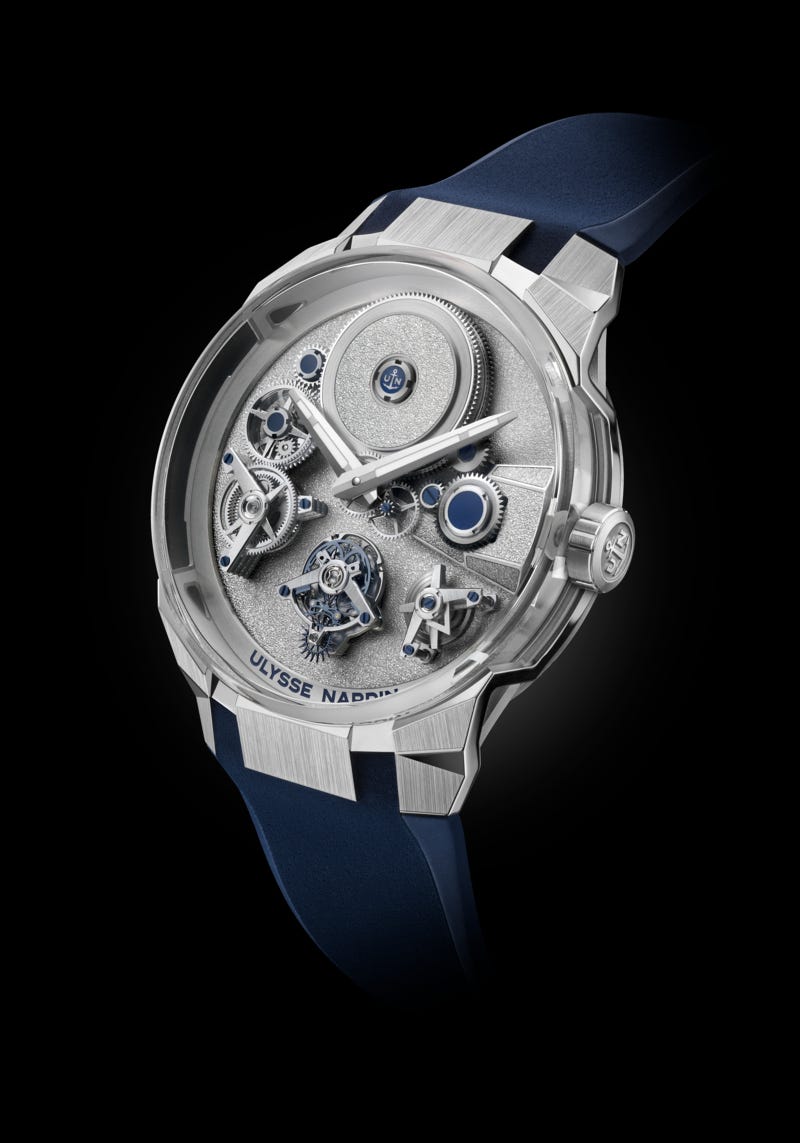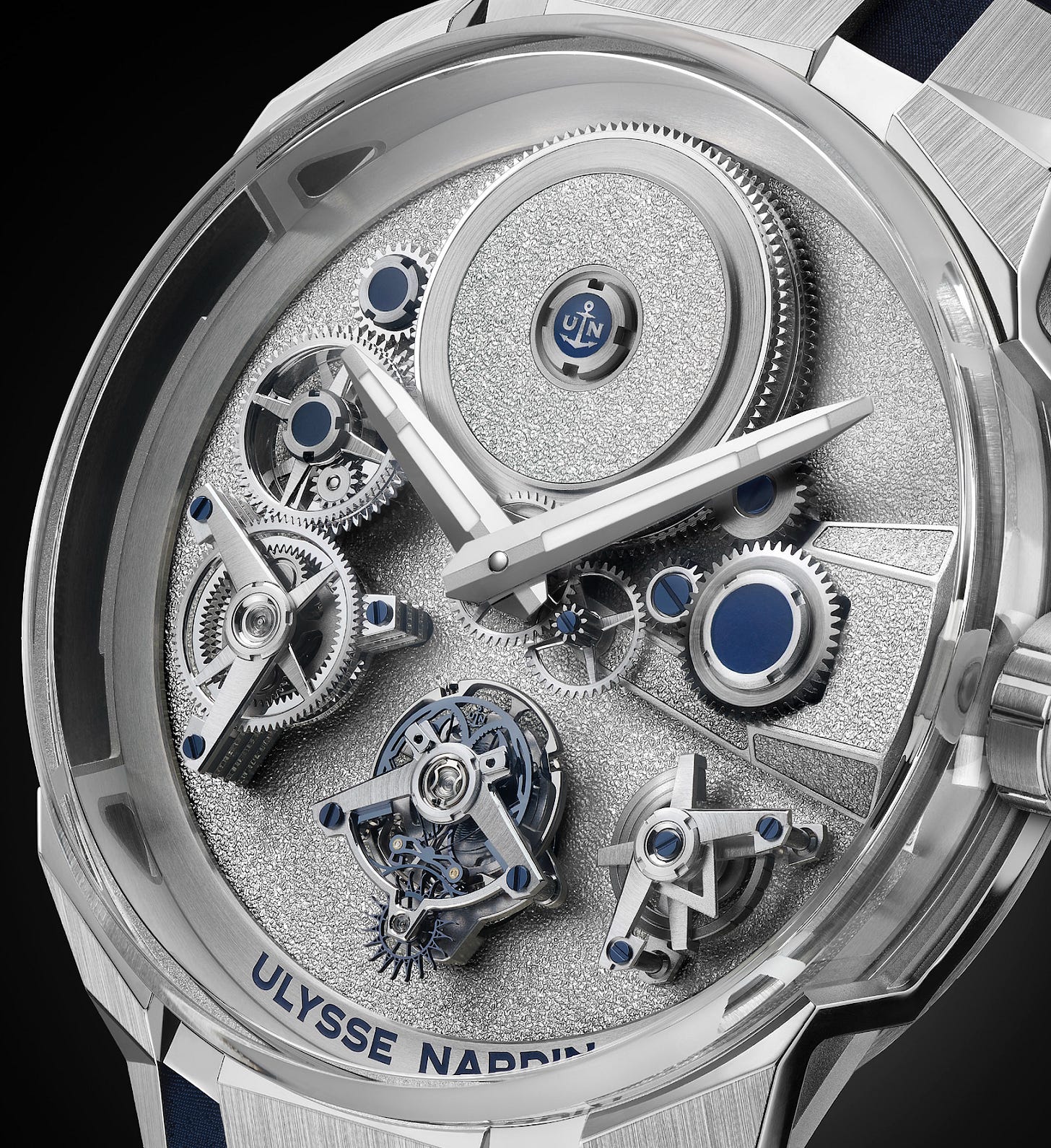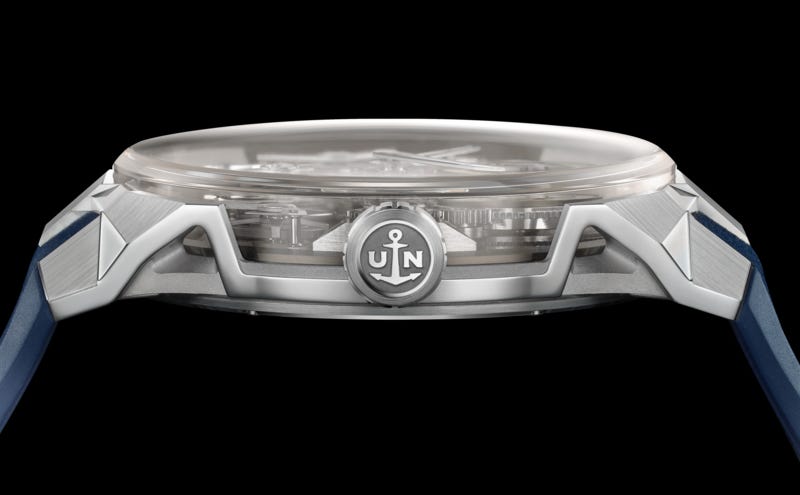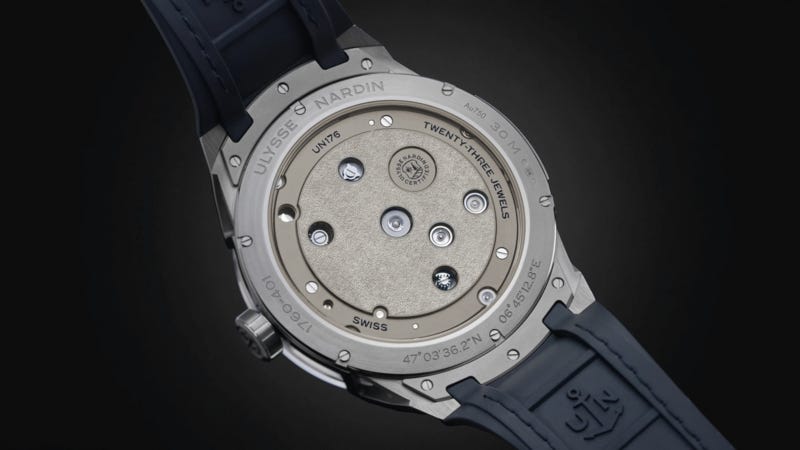The Floating Gesture
Ulysse Nardin’s latest release trades legibility for levitation, reflecting a cultural shift where engineering performs, status mystifies, and timekeeping becomes secondary.
The new BLAST [FREE WHEEL MAILLECHORT] floats its mechanisms on the dial without visible attachment, which is precisely what it does to logic. Here is a timepiece whose components hang in space like expensive prayers—gears and barrels suspended by hidden supports to create the illusion of mechanical impossibility. The press materials speak of "mystery meeting mastery," though the real mystery is why we require our tools to perform impossibility when possibility would suffice.
At twelve o'clock, a double-barrel system hovers without support, accumulating seven days of power for people who will wind it weekly out of duty rather than need. This is the ritual the watch truly serves: the weekly acknowledgment that something in our possession operates beyond our comprehension. The power reserve indicator remains static while its display disc rotates beneath it, reversing the conventional relationship between pointer and scale. Three bands mean full power; one band means empty. The watch has reduced its communication to traffic signals for the mechanically illiterate.
Ulysse Nardin promises this creation "defies perception and redefines engineering," words that reveal more about contemporary desire than horological achievement. We have arrived at a moment when defiance itself has become the product, when the appearance of impossibility matters more than its actuality. The floating mechanisms serve no function that conventional mounting could not accomplish more reliably, but conventional mounting lacks the essential element: theater.
The blade springs supporting the constant escapement measure thinner than human hair, an achievement of genuine technical merit that demonstrates what Swiss manufacturing can accomplish when precision serves purpose. These components actually regulate power delivery with mathematical consistency, ensuring the balance wheel receives identical impulses regardless of mainspring tension. This represents engineering solving a real problem. The fact that this solution must then be suspended in apparent violation of mechanical law suggests something about our relationship to expertise itself.
The Maillechort dial evolves over time, developing a patina that will mark the passage of years on a timepiece designed to mystify rather than measure them. This "living metal" contains copper, zinc, and nickel in proportions that create durability and acoustic resonance—qualities originally chosen for musical instruments. The material connects this watch to a tradition of precision tools, even as its presentation abandons utility for spectacle.
Consider the sapphire crystal case, carved from a single block and hollowed to display the floating architecture. This represents hundreds of hours of machining to create a viewing chamber for mechanisms most owners will never comprehend. The technical specifications mention 246 components and 23 jewels—figures that reflect the watch's legitimate mechanical complexity while serving simultaneously as incantations for buyers seeking quantified sophistication.
The watch operates at 18,000 vibrations per hour, a deliberately slower frequency than the 28,800 standard in contemporary horology. This choice serves the watch's theatrical ambitions: slower oscillations extend the seven-day power reserve, reduce mechanical wear, and transform the tourbillon into a more hypnotic spectacle. Technical decisions become aesthetic ones when timekeeping serves performance.
Ulysse Nardin's maritime heritage provides the mythological framework for this exercise in mechanical levitation. The company's marine chronometers literally floated in gimbal systems, their suspension serving the practical purpose of maintaining accuracy on rolling seas. Here, floating serves a different master - not precision but perception, not navigation but mystification. The brand promises to challenge 'conventional watchmaking principles,' though the principles being challenged are primarily economic rather than horological.
The limited edition of fifty pieces ensures scarcity and will reinforce mystique. At 120,000 Swiss francs, the price point eliminates buyers seeking mere timekeeping, leaving only those who require their possessions to demonstrate sophistication. The blue velvet strap and white gold folding buckle complete the transformation of the measuring device into status artifact. The price becomes its own justification—not payment for function but for the privilege of owning something that transcends function entirely.
The flying tourbillon at six o'clock won the Grand Prix d'Horlogerie de Genève in 2015, an achievement that validates the technical legitimacy underlying this exercise in expensive confusion. The silicon components eliminate friction and magnetic interference, solving actual problems with innovative materials. These advances matter. The question becomes why solutions to real problems must be presented as magic tricks for people who will never encounter the problems.
The BLAST [FREE WHEEL MAILLECHORT] succeeds completely at its actual purpose: creating an object so mechanically nuanced that ownership becomes a form of intellectual mysticism. It floats its complications in space like relics under glass, demanding reverence rather than understanding. The seven-day power reserve will outlast most owners' sustained attention to horological detail, but sustained attention was never the point.
This is what we have made of precision: a performance of complexity that demonstrates our capacity to possess what we cannot comprehend. The floating mechanisms mirror our relationship to technology itself—surrounded by processes we cannot explain, finding comfort in their reliable mystery. The watch tells perfect time while suggesting that time itself might be subject to different laws, available to those who can afford to purchase exemption from ordinary mechanical reality.
Author: Sergio Galanti







